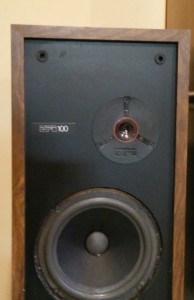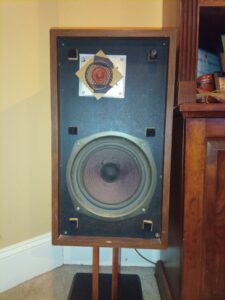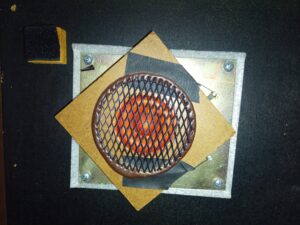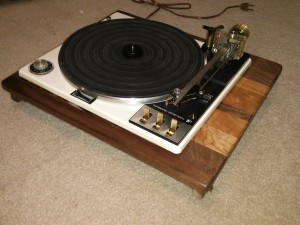I still believe music is best heard as sound was meant to be – as an analog wave. Digital music goes from Analog to being converted to digital and then converted back to analog before you can hear it. While digital is obviously convenient, there is still something special about the sound of vinyl playing through a vintage amplifier into some real speakers!
When i was younger i dabbled a bit in making amps etc but hung up my soldering iron a long time ago. A few years ago i took it our of retirement and started working on various audio project and started collecting a few pieces of vintage audio equipment, some which I have reburbished. Some of my projects are below.
Sansui AU-517 and TU-517 Integrated amplifier and tuner project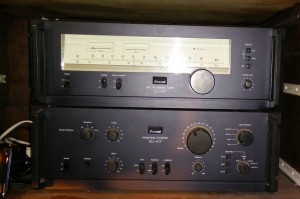
Sansui equipment from the 70’s was amazing – fantastic quality, built like tanks and they sounded and looked great. I landed the above integrated amp and tuner set and decided to refurbish it. I took out all the boards, cleaned it all up and replaced all the electrolytic caps with new high end audio caps. The volume pot was loose and noisy and needed replacement. I could not find an equivalent replacement, so built a step attenuator and replaced the pot.
The Tuner barely needed any work – just a good cleaning. The tuning mechanism was in perfect condition and is a beautiful demonstration of mechanical engineering.
The result – a amazing sounding piece of equipment that is now the main unit in my study. It is paired with a similar generation EPI 100 speaker shown below. I think this amp will last another 50 years!
EPI 100 speakers
Notice the cool inverted cone tweeters? EPI was a small NY company that produced some really good speakers in the 70’s. I picked these up cheap from someone garage where they were gathering dust – and despite their small size, they are heavy – made of solid wood.
After some cleaning and re-coning of the woofers, i paired them with the Sansui’s – and I was blown away! They made my Bose speakers from the 80’s seem like toys. Tight bass, clean highs and very powerful sound overall. I didn’t even have to touch the crossover. One day i may recap the crossover, but no need at the moment as they sound amazing!
Large Advent speakers from the ’70s
Another speaker that has an interesting Tweeter is the Large Advents from the 70’s, which was popularly known as the “egg-drop” tweeter. I found a pair of these at a thrift store for just $25 – because clearly they had been tampered with – but I bought them anyway. After opening them up, I saw that both the drivers were replaced with some cheap woofer. So I trolled ebay for months and finally landed a matched pair of drivers for these speakers, in good condition, for $99. Installed them, checked the cross-over circuit and cleaned them all up – and I now have an amazing paid of Advents.
They are now paired up with my Sansui amp and is my daily driver in my study – sorry EPI’s!
Garrard Zero 100 turntable
Ideally in a turntable, the cartridge will always be at a tangent to the record. This would produce the best sound and remove the tracking force issues. However almost all turntables have arms that pivot at a certain point – starting out at a tangent to the outermost grooves and becoming more angled towards the inner grooves.
Engineers have tried to solve this problem for years, including turntables with the arm always straight and moving along a track. But none worked very well.
In the 70’s however, the British turntable company release their Zero 100 and 100c turntables – they were feats of engineering with an incredibly intricate yet elegant design of the arm in which not only did the arm pivot but also the cartridge. This achived this very simply using 2 additional fixed length metal rods in parallel to the center of the main arm. The result – perfect tracking – cartridge always at a tangent.
These turntables were revolutionary and the design was lauded all over the audio world. However Garrard made some fundamental errors- they compromised in other areas, such as plinth materials and too light a platter etc – and the turntable suffered and never reached the greatness that the tonearm design should have taken it to.
I found one of these is pretty bad condition and bought it for $25. I decided to refurbish it, just to showcase the ingenuous tonearm design – I doubt I would really use the turntable as it needed a new cartridge and a good fit was hard to find.
So I removed all the crappy plastic, had a custom plinth built by a maker of cutting boards – it is a beautiful fused walnut and cherry board. I isolated the turntable using acoustic isolation material. After careful cleaning and removing all the old guck, lubricating all the moving parts, replacing some wires etc – I installed it in the plinth and it looks fantastic. Is it now the centerpiece of my collection and a great conversation starter.
